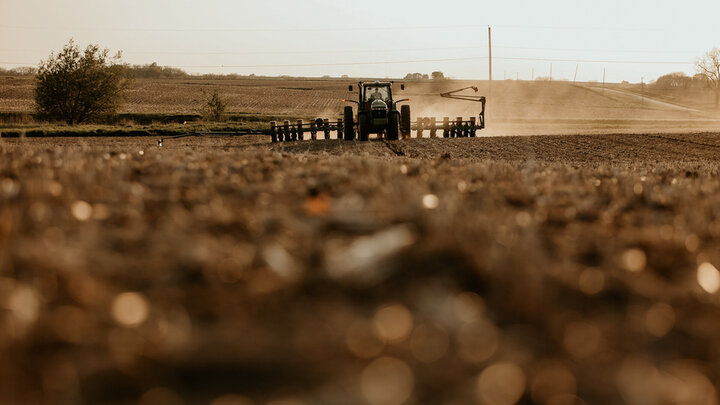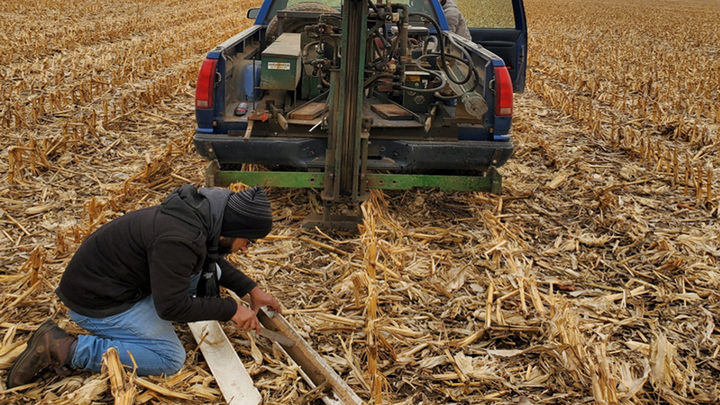
Establishing Cover Crops for Grazing in Hail-damaged Crop Fields
By Daren Redfearn, Extension Forage Crop Residue Specialist
The main economic factor resulting from wind and hail damage to corn and soybean fields is yield loss through elimination or reduction of grain production. In addition, much of the residue that would usually be available for erosion protection or winter forage is also lost.
The most important first step after hail is to contact your crop insurance adjuster and clarify your plans prior to any changes in management. Secondly, explore opportunities to apply for any available assistance from NRCS or other agencies. Usually, after a hail event there is only a short time to communicate with the crop insurance agents and adjusters, apply for any available assistance, and make final decisions on cover crop establishment. Previous herbicide use may eliminate some potential cover crop or forage choices.
Where hail destroyed the crop, the earliest potential growth for erosion control or fall grazing would come from a combination of oat and turnip. With early planting under irrigation, this mixture has the potential to produce 2 to 3 tons of forage dry matter per acre in 60 to 70 days. Radishes, annual ryegrass, and other spring cereals, like spring barley or spring triticale, also are good alternatives for fall forage.
The best choice for a corn residue replacement is a summer annual, such as forage sorghum, sudangrass, or millet. Since these are warm weather crops, they will need to be planted in time to produce enough growth before fall temperatures cool. Under irrigation, they can produce up to 2 tons of forage dry matter per acre. These would be grown until a killing frost and then grazed similarly to corn residue.
For more information, refer to “Utilizing Annual Forages with Limited Irrigation for Beef Cattle During and Following Drought” (NebGuide G2185). Even though the focus is on annual forage management during and after drought under limited irrigation, many of the management practices and principles are relevant to post-hail management.
Infographic: Cover Crops >

MEET THE TEAM

This project was funded by a USDA National Institute of Food & Agriculture Smith-Lever Special Needs Grant with matching funds from the University of Nebraska–Lincoln.







